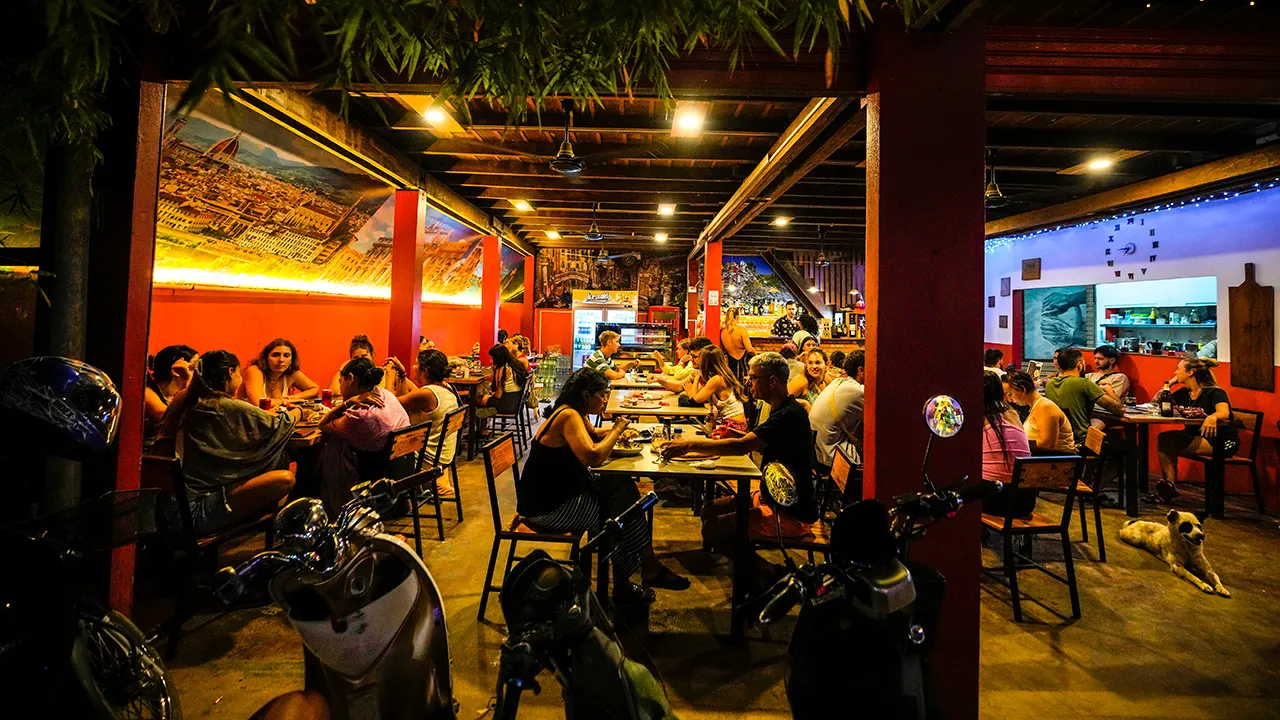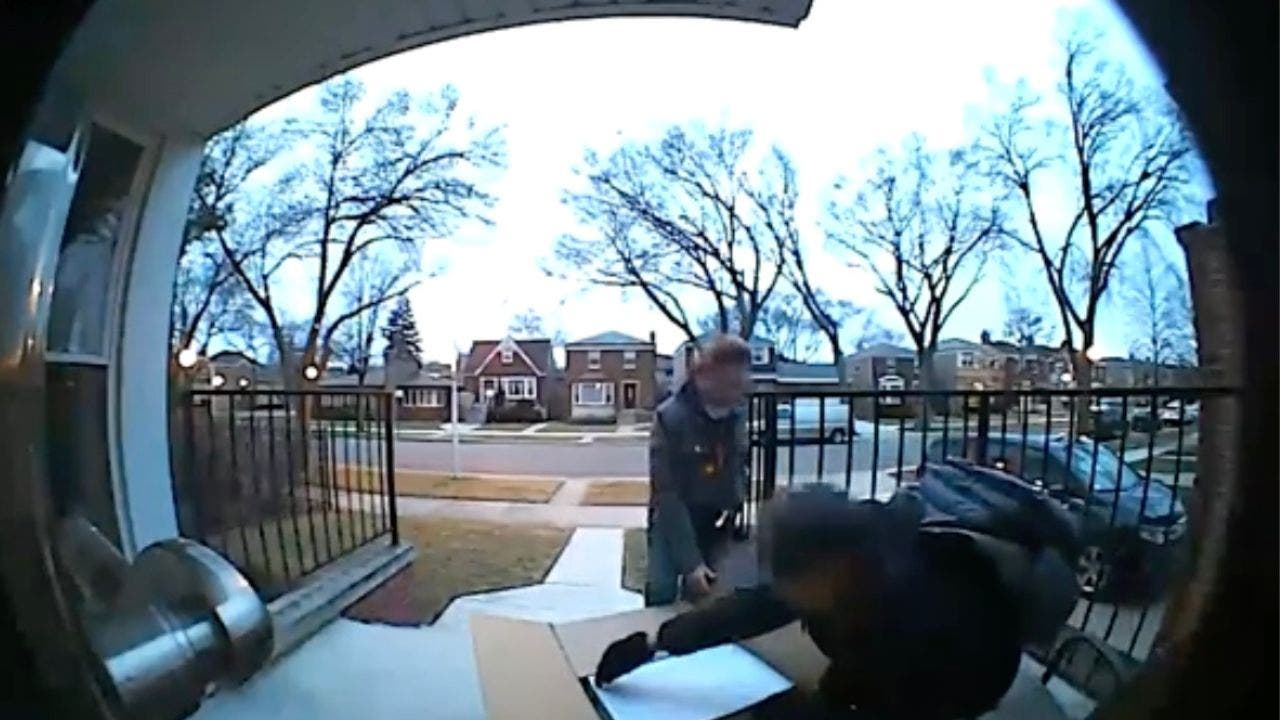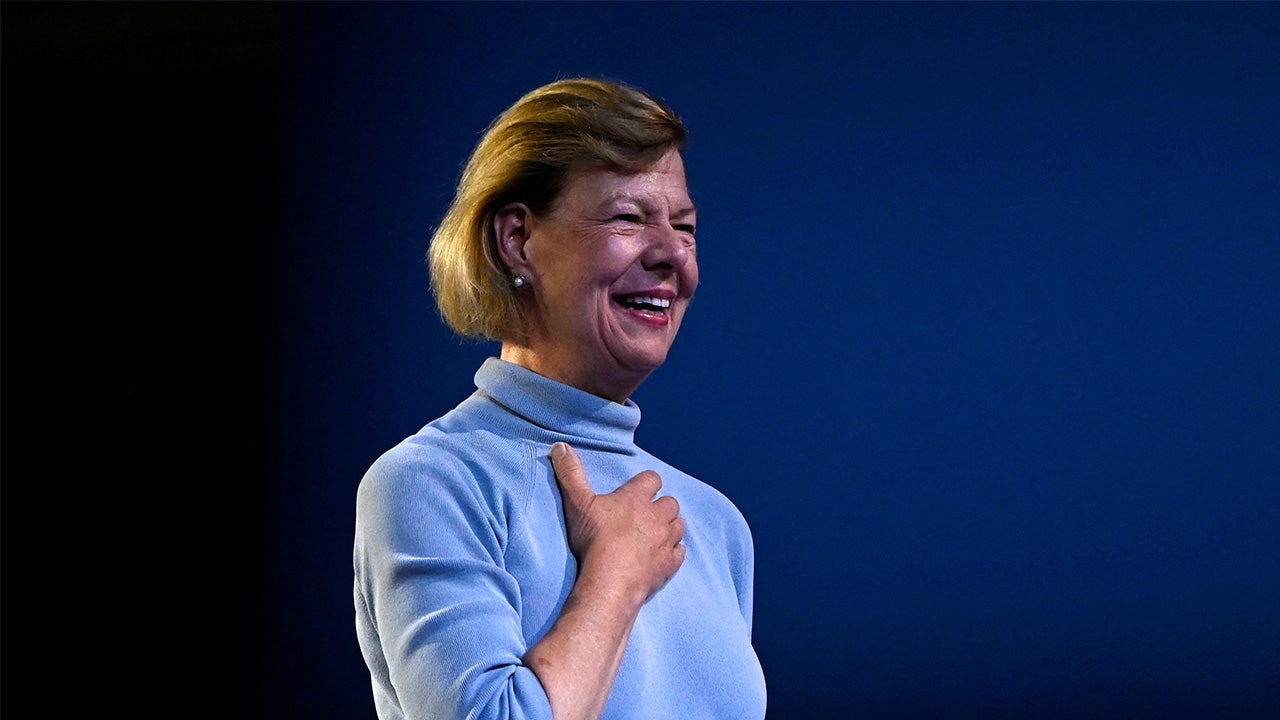New York
Vote For the Best Metropolitan Diary Entry of 2023

Every week since 1976, Metropolitan Diary has published stories by, and for, New Yorkers of all ages and eras (no matter where they live now): anecdotes and memories, quirky encounters and overheard snippets that reveal the city’s spirit and heart.
For the past two years, we’ve asked for your help picking the best Diary entry of the year. Now we’re asking again.
We’ve narrowed the field to the five finalists here. Read them and vote for your favorite. The author of the item that gets the most votes will receive a print of the illustration that accompanied it, signed by the artist, Agnes Lee.
The voting closes at 11:59 p.m. on Monday, Dec. 18. You can change your vote as many times as you’d like until then, but you may only pick one. Choose wisely.
Click “VOTE” to choose your favorite Metropolitan Diary entry of 2023, and come back on Dec. 24 to find out which one our readers picked as their favorite.
Click “VOTE” to choose your favorite Metropolitan Diary entry of 2023, and come back on Dec. 24 to find out which one our readers picked as their favorite.

Subway Sandwich
Dear Diary:
I got on the Q at 96th Street. I was on my way to Hell’s Kitchen to grab a quick dinner before watching “RuPaul’s Drag Race.”
A woman got on at 86th Street and sat right next to me. She was probably in her 50s, had a full head of curly blond hair and was getting off a call since she was about to lose service.
As we approached 72nd Street, the woman searched through her purse and pulled out a sandwich: smoked salmon on pumpernickel bread.
The train was packed, but she was determined to eat this sandwich. As we approached 63rd Street, she started to rummage through her bag again. This time, she pulled out a pepper grinder.
Apparently oblivious to everyone around her, she disassembled the sandwich, ground some fresh pepper onto the salmon and put the grinder back in her bag. Then she started eating.
Now everyone was staring at her. Some people were chuckling to themselves.
“Wow,” one man said to the woman. “That was quite the experience. Never seen that one before.”
She cleared her throat and smiled.
“This is New York City,” she said. “I always carry my pepper grinder. You never know when you’ll need it.”

Birth Day
Dear Diary:
It was July 23, 2010, and I was in the labor and delivery ward at Beth Israel Hospital to give birth to my son.
My then-husband and I were excited and nervous. My mother was visiting from Montana — a vacation in the big city to meet her first grandchild.
I had been induced earlier that morning, and my labor was progressing slowly. We spent the day joking around, reviewing the baby names we had chosen, waiting for the action to really begin.
By the middle of the day, my contractions were getting stronger and coming more frequently. Late in the afternoon, my midwife decided it was time to kick things up a notch. She described the next steps: She would break my waters with the goal of strengthening contractions and speeding up labor.
“But first,” she said, “I have to move my car.”

Valuable Tips
Dear Diary:
I was taking a walk in the Wall Street area a few years ago when I decided to pop into a deli.
I ordered a sandwich and began chatting with the proprietor as he made it. Our conversation eventually turned to the shop’s location.
I asked whether being in the Financial District ever caused him to play the stock market or led to his getting valuable tips from informed customers.
He paused his sandwich-making, put down his knife and looked at me with a perplexed expression.
“Every day, those brokers come in here,” he said. “They get their bagels, sandwiches, doughnuts, coffee, cigarettes … ”
He paused again and pointed toward the door of his shop.
“ … and every day, they’re out there on the sidewalk, pushing and shoving on a door that is clearly marked ‘pull.’”

Blue Soccer Ball
Dear Diary:
During an early morning walk in Brooklyn Bridge Park with my daughter Ella, I spotted a blue soccer ball on the sidewalk adjacent to the turf fields on Pier 5.
A quick look around the area did not reveal any players who might have kicked a ball so far out of bounds. Ella asked if we could keep the ball and, after a brief moral dilemma, I picked it up and brought it with us.
When we got home, I cleaned the ball with a wipe in the kitchen sink. When I did, I discovered a name and number in faded marker. I texted the number, explained that we had found the ball and offered to return it.
“Keep it,” the reply text said. “My kids lost that ball seven years ago at that field. They’re all grown up and no longer need it. I hope your daughter enjoys it as much as they did.”

Whale Watching
Dear Diary:
My friend Tom runs a popular whale watch cruise out of Sheepshead Bay. Recently, an avid whale watcher and good friend, Buddy, died. One of Buddy’s wishes was that Tom spread his ashes on the ocean he loved so much.
So, on a beautiful summer evening, Tom canceled his usual nightly cruise and organized a private memorial service. More than 80 of Buddy’s friends and family members came to say a last goodbye.
A serious-looking young woman who sat quietly by herself was among the passengers. None of the other people, including the crew members, knew who she was.
The boat set out and the service went off very well, with lots of laughter, a few tears and people telling their favorite stories about Buddy.
When the boat returned to the dock in Brooklyn, Captain Tom spoke with everyone as they departed. When the young woman approached him, Tom thanked her for attending and said how happy he was that they had shared such a beautiful evening.
“Honestly,” she said, “this was the worst whale watch cruise I have ever been on.”

New York
Map: 2.3-Magnitude Earthquake Strikes Connecticut
Note: Map shows the area with a shake intensity of 3 or greater, which U.S.G.S. defines as “weak,” though the earthquake may be felt outside the areas shown. The New York Times
A minor, 2.3-magnitude earthquake struck in Connecticut on Wednesday, according to the United States Geological Survey.
The temblor happened at 7:33 p.m. Eastern about 1 mile northwest of Moodus, Conn., data from the agency shows.
As seismologists review available data, they may revise the earthquake’s reported magnitude. Additional information collected about the earthquake may also prompt U.S.G.S. scientists to update the shake-severity map.
Aftershocks in the region
An aftershock is usually a smaller earthquake that follows a larger one in the same general area. Aftershocks are typically minor adjustments along the portion of a fault that slipped at the time of the initial earthquake.
Quakes and aftershocks within 100 miles
Aftershocks can occur days, weeks or even years after the first earthquake. These events can be of equal or larger magnitude to the initial earthquake, and they can continue to affect already damaged locations.
Source: United States Geological Survey | Notes: Shaking categories are based on the Modified Mercalli Intensity scale. When aftershock data is available, the corresponding maps and charts include earthquakes within 100 miles and seven days of the initial quake. All times above are Eastern. Shake data is as of Wednesday, Nov. 20 at 7:41 p.m. Eastern. Aftershocks data is as of Wednesday, Nov. 20 at 11:34 p.m. Eastern.
New York
Two Affordable Housing Buildings Were Planned. Only One Went Up. What Happened?

It is an idea that many point to as a solution for New York City’s worst housing shortage in over 50 years: Build more homes.
More people keep deciding they want to live in the city — and the number of new homes hasn’t kept pace. Residents compete over the limited number of apartments, which pushes rents up to stratospheric levels. Many people then choose to leave instead of pay those prices.
So why is it so hard to build more housing?
The answer involves a tangled set of financial challenges and bitter political fights.
We looked at two developments that provided a unique window into the crisis across the city, and the United States, where there aren’t enough homes people can actually afford.
Both developments — 962 Pacific Street in Crown Heights in Brooklyn, and 145 West 108th Street on the Upper West Side in Manhattan — might have appeared similar. Both were more than eight stories, with plans for dozens of units of affordable housing. And each had a viable chance of being built.
But only one was.
Here’s how their fates diverged, from the zoning to the money and the politics.
The Neighborhood
The lack of housing options across the region makes high-demand areas particularly expensive.
Homes are built in Westchester County and the Long Island suburbs, for example, at some of the slowest rates in the country. In New York City, only 1.4 percent of apartments were available to rent in 2023, according to a key city survey.
And median rent in the city has risen significantly over the past few decades.
Source: U.S. Census Bureau
That leaves neighborhoods like the Upper West Side and Crown Heights sought after by people of all income levels. Both neighborhoods have good access to parks, subways and job centers in Brooklyn and Manhattan.
The pressures are immense, even as each neighborhood has added some new housing to try to match the demand, though at different rates.
Crown Heights has become one of the most striking emblems of gentrification in the city, with new residents, who tend to be white and wealthy, pushing out people who can no longer afford to live there. Low-rise rowhouses line many streets, just blocks from Prospect Park. But there are also shiny new high-rises.
There were more than 50,000 housing units in the Crown Heights area, according to a 2022 U.S. Census Bureau estimate, a roughly 13 percent jump over the past decade.
The Upper West Side has long been one of the city’s more exclusive enclaves with many brownstone homes. Next to Central Park and Riverside Park, with easy access to downtown, the neighborhood is home to many of the city’s affluent residents.
There were 129,000 housing units on the Upper West Side according to the 2022 Census Bureau data, an increase of roughly 5 percent over the same time period.
The Lot
There isn’t as much empty land left in New York City compared with places like Phoenix or Atlanta, which can expand outward. City developers have to look hard to find properties with potential, and then they have to acquire the money to buy them.
The empty lot in May 2021. Google Street View
Between the two proposals, the Crown Heights site seemed to be more promising at first glance. Until 2018, it was just vacant land that local businesses sometimes used as a parking lot. The developer, Nadine Oelsner, already owned it, removing a potential roadblock that can often tie up projects or make them financially unworkable.
One of three aging parking garages in September 2015.
Google Street View
On the Upper West Side, though, the site was already occupied by three aging parking garages with a shelter and a playground in between. The garages would need to be demolished if the developer, a nonprofit known as the West Side Federation for Senior and Supportive Housing that operated the shelter, succeeded in its plan to build apartments on either side of the playground.
The new development, which was floated to the community in 2015, would also include a renovated and expanded shelter. And the nonprofit did not own the garages or the land — the city did.
One thing working in the group’s favor, though, was that the city had wanted to build housing on the site since at least the mid-2000s, according to planning documents.
Source: West Side Federation for Senior and Supportive Housing
The Zoning
But something invisible can matter more than a plot’s physical characteristics: zoning.
That governs how every piece of land in New York City can be used. Zoning determines, for example, whether homes or warehouses are allowed in a particular area, how much parking is needed and how tall a building can be.
It also aims to prevent growth in haphazard ways, with schools next to factories next to office buildings.
The city’s modern zoning code does not leave much room for growth, which means that a bigger building often requires a zoning change. One 2020 study by the nonprofit Citizens Budget Commission found that only about one residentially zoned plot in five would allow for that kind of additional housing. A zoning change triggers a lengthy, unpredictable bureaucratic process.
The site Ms. Oelsner owned was zoned for industrial, not residential use, a throwback to a time when that part of Brooklyn was dominated by businesses supported by the nearby railroad line.
Community leaders were frustrated by one-off changes to individual lots — there had been at least five zoning changes within a two-block radius of Ms. Oelsner’s site in recent years. To counter the trend, the community decided to come up with a bigger rezoning plan for the area. Ms. Oelsner saw an opportunity for her lot in that idea.
But she would need a zoning change, too.
Sources: OpenStreetMap, New York City Department of City Planning
The site on the Upper West Side had a slight edge: It was zoned for residential use.
As the project began to move forward, the city also sought a slight zoning change to allow for a bigger structure with more homes.
Sources: OpenStreetMap, New York City Department of City Planning
The Proposal
U.S. housing is mostly built and run by the private sector. If developers and owners can’t cover their costs with income from rents and sales — and make a profit — they most likely won’t build.
This can make it hard to keep rents affordable to potential tenants without big subsidies from the government, such as money a developer receives directly or tax breaks in exchange for making some units affordable for people at specified income levels.
Here are more details of what the two developers planned.
The proposal for the Crown Heights lot was by Ms. Oelsner and her company, HSN Realty, who were private developers working without city support.
Ms. Oelsner also made the case that her family had been part of the community for years, operating a Pontiac dealership.
Most of the apartments she proposed would rent at market rates, meaning the rents could be set as high as the landlord thought tenants could pay. This was similar to other new buildings in the area.
In Ms. Oelsner’s case, a government subsidy would likely come in the form of a decades-long property tax exemption.
In exchange, several apartments would be made “affordable” — in this case, rents would be capped at a certain percentage of gross household income for particular groups.
Under one plan, for example, 38 units would be restricted in this way. Of those, 15 might rent for around $1,165 for a one-bedroom apartment, or $1,398 for a two-bedroom.
Source: West Side Federation for Senior and Supportive Housing
The proposal from the West Side Federation had a much stronger case because of the city’s support. The group wanted to construct a building where all the apartments would rent below market rates and be targeted to some of the city’s poorest residents.
Most units would rent to people who were formerly homeless, often referred from shelters and typically relying on government-funded voucher programs to pay almost all of their rent. The remaining apartments would rent for between $865 and $1,321.
The West Side Federation said it had slowly built trust in the community over decades, in part because of the shelter it already operated on the street and was now expanding, as well as two dozen other area buildings it ran.
Because of that track record, and the need for affordable housing, the city decided to do several things. It essentially gave the developer the land — appraised at about $55 million — for free, a typical government practice in such a scenario.
It also chipped in $9 million to help pay for construction and another $33 million through a federal tax credit program. The West Side Federation would not have to pay property taxes on the development.
The Politics
Both projects met immediate opposition as they began to wade through a bureaucratic city process in which housing proposals often run into challenges from community members and politicians. It’s not unusual for this process to be costly and time-consuming, often taking more than two years.
In fact, this is where Ms. Oelsner’s project in Crown Heights met its end.
Informal project discussions
These discussions between the developer, the community and the government about the project can determine its fate early. They helped shape both the Crown Heights and the Upper West Side proposals.
Application filed with the city
An application is filed with the City Planning Department and is considered certified if it properly describes the proposal and any zoning change. Over 60 days, the community board holds a public hearing. The Upper West Side project was recommended for approval while the Crown Heights project wasn’t. This isn’t binding so the Crown Heights proposal still moved ahead.
Over 30 days, the borough president’s office might hold another public hearing and issue its own recommendation. Both projects were recommended for approval.
City Planning Commission review
Over 60 days, the commission may hold another public hearing and vote on whether to allow the project to move forward. Both projects were approved.
Here’s where things ended for the Crown Heights project, which was rejected by the council member from the area. The Upper West Side project was approved. The mayor has the option to veto a project, and the City Council can override that veto. In this case, the Upper West Side project was not vetoed.
Informal project discussions
These discussions between the developer, the community and the government about the project can determine its fate early. They helped shape both the Crown Heights and the Upper West Side proposals.
Application filed with the city An application is filed with the City Planning Department and is considered certified if it properly describes the proposal and any zoning change.
Over 60 days, the community board holds a public hearing. The Upper West Side project was recommended for approval while the Crown Heights project wasn’t. This isn’t binding so the Crown Heights proposal still moved ahead.
Over 30 days, the borough president’s office might hold another public hearing and issue its own recommendation. Both projects were recommended for approval.
City Planning Commission review
Over 60 days, the commission may hold another public hearing and vote on whether to allow the project to move forward. Both projects were approved. Here’s where things ended for the Crown Heights project, which was rejected by the council member from the area. The Upper West Side project was approved.
The mayor has the option to veto a project, and the City Council can override that veto. In this case, the Upper West Side project was not vetoed.
Informal project discussions
These discussions between the developer, the community and the government about the project can determine its fate early. They helped shape both the Crown Heights and the Upper West Side proposals. Application filed with the city
An application is filed with the City Planning Department and is considered certified if it properly describes the proposal and any zoning change.
Over 60 days, the community board holds a public hearing. The Upper West Side project was recommended for approval while the Crown Heights project wasn’t. This isn’t binding so the Crown Heights proposal still moved ahead.
Over 30 days, the borough president’s office might hold another public hearing and issue its own recommendation. Both projects were recommended for approval.
City Planning Commission review Over 60 days, the commission may hold another public hearing and
vote on whether to allow the project to move forward. Both projects
were approved.
Here’s where things ended for the Crown Heights project, which was rejected by the council member from the area. The Upper West Side project was approved.
The mayor has the option to veto a project, and the City Council can override that veto. In this case, the Upper West Side project was not vetoed.


In Crown Heights, neighbors wanted more apartments to be available at lower rents and were concerned about parking. Ms. Oelsner worried the bigger rezoning plan of the area would take too long and, if she waited, would run up the costs of her project, which she said she had designed to be consistent with the broader efforts.
In the end, Crystal Hudson, who held the power to approve or reject the development as the local council member, voted against Ms. Oelsner’s proposal last year, effectively killing the project. Ms. Hudson said she would not back individual developments until the bigger neighborhood rezoning was finished.
On the Upper West Side, a vocal resident group had several complaints: that the loss of the parking garages could lead to an uptick in traffic, greenhouse gas emissions and accidents; that the development could disturb students at a nearby middle school; and that it could reduce the amount of sunlight in nearby parks.
The councilman who represented the neighborhood at the time, Mark Levine, initially said he would hold off on supporting the plan until he better understood the effects of more cars on the street.
Eventually, though, the project gave the community enough of what it wanted, the group behind the project said, and government officials came around. The project was split into two phases, keeping one garage running for a few years after the first two were demolished.
The Results
One key to successful development is buy-in from the government and local politicians. The Upper West Side plan had that, despite the opposition it faced, while the Crown Heights project did not.
That’s in part because the Upper West Side lots were owned by the city, which was ready and willing to chip in lots of money to create a deeply needed housing project in the area that would most likely not have been built otherwise. The Crown Heights lot, on the other hand, is privately owned and mostly out of the city’s control — which made the project potentially very lucrative for the owners, even if it added some benefit to the community.
Hiroko Masuike/The New York Times
The dirt lot in Crown Heights remains a dirt lot. The broader plan Ms. Hudson pushed is underway, set to be completed next year.
Ms. Oelsner, however, has said that she’s not sure whether it still makes financial sense to build her project, so its fate remains uncertain.
Hiroko Masuike/The New York Times
The Upper West Side building has been open for about two years. It is full and has a long waiting list.
And the amount tenants pay in rent remains low. That’s because the government sends the West Side Federation about $1 million annually to help cover the rent.
New York
Read the Trump Assassination Plot Criminal Complaint

and committed out of the jurisdiction of any particular State or district of the United States,
FARHAD SHAKERI, CARLISLE RIVERA, a/k/a “Pop,” and JONATHAN LOADHOLT, the
defendants, and others known and unknown, at least one of whom is expected to be first brought
to and arrested in the Southern District of New York, knowingly and willfully did combine,
conspire, confederate, and agree together and with each other to commit murder-for-hire, in
violation of Title 18, United States Code, Section 1958.
6. It was a part and an object of the conspiracy that FARHAD SHAKERI,
CARLISLE RIVERA, a/k/a “Pop,” and JONATHAN LOADHOLT, and others known and
unknown, would and did knowingly travel in and cause others to travel in interstate and foreign
commerce, and would and did use and cause another to use a facility of interstate and foreign
commerce, with intent that a murder be committed in violation of the laws of the State of New
York or the United States as consideration for the receipt of and as consideration for a promise or
agreement to pay anything of pecuniary value, to wit, SHAKERI, RIVERA, and LOADHOLT
participated in an agreement whereby RIVERA and LOADHOLT would kill Victim-1 in exchange
for payment, and used cellphones and electronic messaging applications to communicate in
furtherance of the scheme.
(Title 18, United States Code, Sections 1958 and 3238.)
COUNT FIVE
(MONEY LAUNDERING CONSPIRACY)
7. From at least in or about December 2023, up to and including the date of
this Complaint, in Iran, the Southern District of New York, and elsewhere, and in an offense begun
and committed out of the jurisdiction of any particular State or district of the United States,
FARHAD SHAKERI, CARLISLE RIVERA, a/k/a “Pop,” and JONATHAN LOADHOLT, the
defendants, and others known and unknown, at least one of whom is expected to be first brought
to and arrested in the Southern District of New York, knowingly and willfully did combine,
conspire, confederate, and agree together and with each other to commit money laundering, in
violation of Title 18, United States Code, Section 1956.
8. It was further a part and an object of the conspiracy that FARHAD
SHAKERI, CARLISLE RIVERA, a/k/a “Pop,” and JONATHAN LOADHOLT, the defendants,
and others known and unknown, in an offense involving and affecting interstate and foreign
commerce, knowing that the property involved in certain financial transactions represented the
proceeds of some form of unlawful activity, would and did conduct and attempt to conduct such
financial transactions which in fact involved the proceeds of specified unlawful activity, to wit,
the proceeds of the murder-for-hire offenses charged in Counts Three and Four of this Complaint,
knowing that the transactions were designed in whole and in part to conceal and disguise the
nature, location, source, ownership, and control of the proceeds of said specified unlawful activity,
in violation of Title 18, United States Code, Section 1956(a)(1)(B)(i).
9. It was further a part and an object of the conspiracy that FARHAD
SHAKERI, CARLISLE RIVERA, a/k/a “Pop,” and JONATHAN LOADHOLT, the defendants,
and others known and unknown, would and did transport, transmit, and transfer, and attempt to
transport, transmit, and transfer, monetary instruments and funds to a place in the United States
3
-

 News1 week ago
News1 week agoHerbert Smith Freehills to merge with US-based law firm Kramer Levin
-
Business1 week ago
Column: OpenAI just scored a huge victory in a copyright case … or did it?
-

 Health1 week ago
Health1 week agoBird flu leaves teen in critical condition after country's first reported case
-

 Business5 days ago
Business5 days agoColumn: Molly White's message for journalists going freelance — be ready for the pitfalls
-
World1 week ago
Sarah Palin, NY Times Have Explored Settlement, as Judge Sets Defamation Retrial
-

 Politics4 days ago
Politics4 days agoTrump taps FCC member Brendan Carr to lead agency: 'Warrior for Free Speech'
-

 Science2 days ago
Science2 days agoTrump nominates Dr. Oz to head Medicare and Medicaid and help take on 'illness industrial complex'
-
/cdn.vox-cdn.com/uploads/chorus_asset/file/25739950/247386_Elon_Musk_Open_AI_CVirginia.jpg)
/cdn.vox-cdn.com/uploads/chorus_asset/file/25739950/247386_Elon_Musk_Open_AI_CVirginia.jpg) Technology3 days ago
Technology3 days agoInside Elon Musk’s messy breakup with OpenAI
/cdn.vox-cdn.com/uploads/chorus_asset/file/25746612/Screenshot_2024_11_21_at_9.15.48_AM.png)














